#large format scanners
Explore tagged Tumblr posts
Text
Is It Important to Buy Canon Copiers from an Authorised Showroom?

The Difference Is Real
When investing in a Canon copier or Xerox machine for commercial use, the source matters as much as the model. Buying from an authorised Canon printer showroom in Kolkata means you're not just getting a product—you’re securing trust, service, and long-term value.
What Authorisation Really Means
Authorised dealers like Aegis Solutions meet strict standards set by Canon. We get direct access to original products, genuine parts, regular training, and software updates. This ensures that when you buy from us, you receive a machine built to perform—along with the assurance that help is always available if something goes wrong.
Avoiding Common Risks
Non-authorised sellers may offer attractive discounts, but those deals come at a cost. Outdated models, incompatible software, limited warranties, and lack of after-sales support often follow. When you're running a commercial setup, these issues can slow down your operations and affect your bottom line.
Hands-On Experience Before You Buy
At our authorised Canon printer showroom in Kolkata, you can explore Canon large format printers and scanners firsthand. Our team walks you through features that matter to your business—not just specs on paper.
Choose with Confidence
Aegis Solutions is here to guide your decision with real-world insights and service you can count on. Buying from an authorised source isn’t an extra step—it’s a smart one.
It’s the difference between guesswork and expert guidance, between limited warranties and long-term reliability. When your business depends on performance, don't take chances—trust the name Canon trusts: Aegis Solutions.
#canon large format printers#Canon large format printers and scanners#canon printer dealers near me#canon printer dealers in kolkata#canon printer showroom#canon printer showroom in kolkata#aegis solutions
0 notes
Text

Large Format Scanner
Ultra fast large format scanners are perfect for high-volume scanning needs, delivering exceptional quality in lesser time. Experience unmatched efficiency elevating your workflow today.
0 notes
Text
I have dishonored my ancestors beyond comprehension with this frivolous accessory.
(page 1349-1358; LOWAS walkaround)


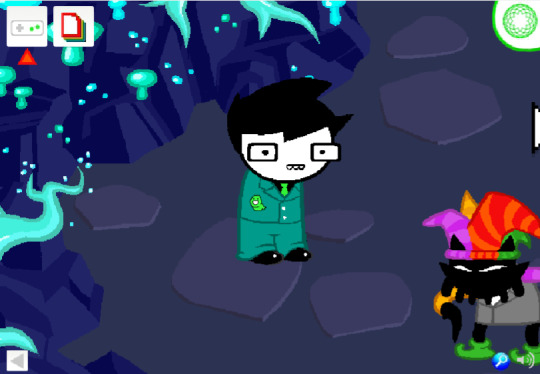
JOHN EGBERT IS BACK. HE’S HERE!!!! Damn it is good to see him. His goofy face and glasses and his cool green slime suit appearing on my screen at the start of Act 4 was such a pleasure and a delight. To be honest I would’ve loved a day or two between the end of the Intermission and the start of Act 4. I am so excited to see John again as well as getting a bunch of new land and lore to explore that it’s super hard to concentrate on both things. The end of the intermission is pretty huge too so one thing at a time.


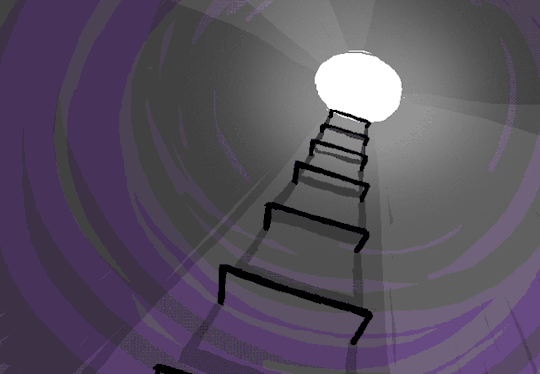





End Intermission
Beneath the barcode scanner door to English’s vault is a bunker of the kind WV and PM have flown to Jade’s island, complete with a command terminal and some similar establishing shots. For sure this is the bunker that Slick (then the Scurrilous Straggler) hung out in when he first arrived in this wasteland, sending commands to a Sburb player who brought about the apocalypse on this pink and green planet. Slick had a similar city building instinct to WV and succeeded in building this town – it’s uncertain whether he used the bunker’s homing function, but that may be how he met up with the rest of the Midnight Crew and Snowman. The Felt’s species and origin remain unknown. For some reason, Lord English – who still has not been seen now the intermission has ended – wanted to cut off this communication. The terminal allows for communication through time (interesting, considering Slick’s distaste for time based powers) so possibly English was researching this as a way to enhance his or his gang’s own powers?
Slick’s command terminal has twelve windows, in place of WV’s four. On page 1355, we see a Creature of some description – a sprite in the same style as the kids, with pale gray skin, yellow eyes and horns, fangs, and a black shirt with a gray symbol. Behind them floats a pincered, crablike sprite(?). They have a gray cruxite dowel and two black captchalogue cards, and there are purple clouds in the window behind them in the same twelve-square pattern as the monitor.
Barring any major twists I think this is probably carcinoGeneticist, a troll Jade talked to on page 859. They write in gray text, with text color often matching cruxite and/or shirt symbol, and the ‘carcino-’ prefix can refer to either crabs or the astrological sign Cancer, which is their shirt symbol. That’s my star sign also so I’m pretty excited about this little guy, even if he sounded like a jackass while trolling Jade and looks really angry with those fangs.
It seems like Trollslum is another intermission in the Midnight Crew MS Paint Adventure that the beta kids are reading? And therefore possibly a future intermission for actual Homestuck? I’m not sure but these pages set up a fun parallel for carcinoGeneticist and John Egbert, in addition to the ‘weird scientist’ format of both their chumhandles. This intermission did a pretty good job of introducing the Felt and giving them distinct appearances and powers despite their large numbers, so I can imagine a future intermission doing this with twelve trolls, and I’m curious what type of genre the story would slip into for them.
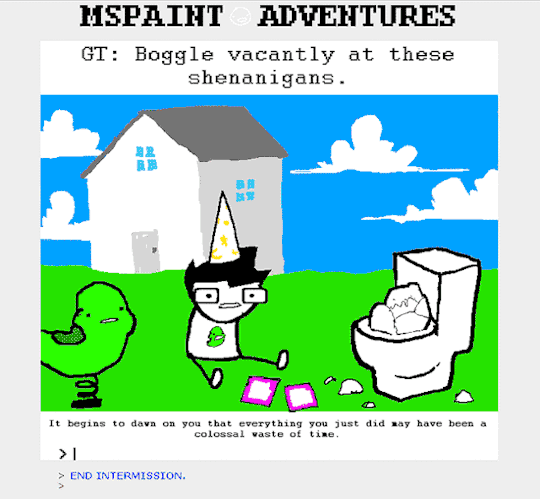
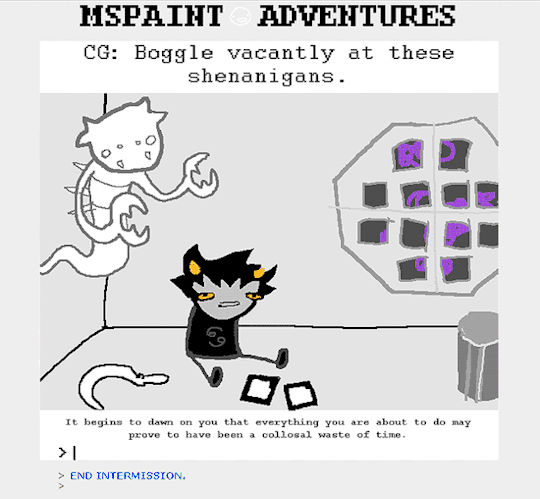


ACT 4
We are dropped into Act 4 with no time to prepare; I have been asking for it, but when the moment came I was not prepared. John has passed through the First Gate, which has portaled him down to the Land of Wind and Shade (!), a planet (!!) ‘where the constellations dance beneath the clouds’ (p.885) (!!!) populated by yellow salamanders (!!!!) who have an extensive mail system (!!!!!) which we the reader get to walk around in and explore (!!!!!!). This mirrors ‘YOU THERE. BOY’ (p.253) where we also get to take over as John after he enters a new area of Sburb.
As previously established John Egbert has probably spent his whole life in western Washington, primarily the suburbs. We don’t know if his family even took vacations. This could be the first other place John has ever been, and it is mystical and magical, glowing blue mushrooms and trees (which look kind of like cruxite!!) surrounding him like some sort of bioluminescent cave video game level. After the day John’s had this place is kind of peaceful when he can find a quiet spot away from the imps. What an absolute dream come true to come to a land this beautiful and get to hang out with such cool, friendly locals. I’m personally delighted by all the visuals on this page, and I’m excited for John to keep exploring LOWAS just so I can see more of it.
John in this panel acts very confused and uncertain about his situation, relying on Nanna’s guidance a lot more than he did while in his house, and nervous around the salamanders (personally, I would be thrilled to meet a secret wizard and behold his robes). That’s definitely a John trait but we don’t get to see so much of his whimsy, stubbornness, problem solving, movie recreations, etc, probably because of the format, which makes me glad this is a single panel. I loved playing through this but wouldn’t want the whole story told in this format.
I’m very grateful for the map linked below the panel, to make sure I’ve explored every corner. I did not 100% Gate 1 because combat is fairly slow and not especially engaging, but the concept is super cool and the programming is impressive. Compared to a video game it feels clunky to play (I got trapped in an endless loop of ejecting and re-captchaloguing items in my sylladex), but as part of a webcomic it’s honestly radical. I feel like I’ve read enough other webcomics at this point to understand how far this is pushing beyond what other authors are doing, and how efficiently this is giving miles of exposition where other comics might take weeks to deliver all this lore (or a handful of wall-of-text comics that readers would complain about).
This panel is PACKED with exposition, from the long distance John and Nanna conversations, and the insights from salamanders. Just like ‘[S] Enter’, this feels like a way to move the story on as quickly as possible. Some of the expository lines do feel clunky, but when it’s paired with the cool visuals and presented in such a novel way, it doesn’t bother me, and I’m sure I’ll reference this page loads just like Nannasprite’s previous exposition. Here are some of the most important things we learn, in my opinion:
John is definitely the Heir of Breath. The Heir’s arrival has long been prophesized among LOWAS’ indigenous creatures; the ‘wind’ in the land’s name presumably links to the ‘breath’ in John’s title.
‘Amphibious and reptilian life forms play a special role in your quest, John.’ ‘Underlings’ (presumably imps, ogres, etc) will deface any frog iconography they come across.
‘The Slumbering One’, who was awake and is now asleep, once cast a spell on the land’s fireflies to trap them within the clouds, much like the trapped firefly WV already rescued from a nugget of amber (p.749).
‘The Slumbering One’ also ‘commissioned’ the underlings (hired them? had them created?) and caused some sort of environmental damage using ‘sludge’, which the salamanders are not happy about.
The mail system is an extremely important part of life on LOWAS to the point of being sacred.
The Second Gate is ‘hidden somewhere in the Land’, although it also might be visible above John’s house (p.251), so there could be multiple possible routes for progression(?)
Jaspersprite’s prototyping has affected the imps on John’s land, who have tentacle, princess and cat characteristics, as well as the imps Rose will fight.
Nannasprite knows that Rose has entered the Medium (and what she looks like).
And most important of all, one salamander essentially gives John a major game quest:
‘The spell I'm sure you've heard from a reliable source cannot be broken unless The Slumbering One is first woken up, and then slain. Then the Breeze will again flow through the Pipes and the Fireflies will be released and allowed to go home. But I do not envy the adventurers who will presumably take on this responsibility!’
Clicking John gives the command ‘I am told your name is John. Is that correct?’, which is closer to the Wayward Vagabond’s ‘BOY WHO IS JOHN. DO AS I SAY’ (p.253) than to the regular player’s ‘John: Action’ command format. So this could indicate that a different future construct is talking to John – possibly the Peregrine Mendicant, because this land is very focused on the mail.
And I LOVE the mail system; it might be my favorite thing about this land. I personally looked in a whole bunch of parcel pyxis, and found several rocks, a shoe, a couple of minitablets, a chunk of amber (firefly not included), a cool frog, and best of all, a jar of bugs. I will guard this jar of bugs with my whole life. The carved minitablets moving through the pipes as a system of trade is very fun worldbuilding.
I guess my one issue with this page is the writing of some of the salamanders. Conceptually they’re great, and I love how their distinct personalities and roles within the culture come through – some are really communicative, while others are unhelpful, some have jobs in the society like mushroom farming, some are entrepreneurial (I would sell my suit to a salamander for 1 Boondollar if it was allowed) and some are outcasts (Crumplehat dishonoring their ancestors). Genuinely I think Hussie did a great job quickly showing a diverse society and hinting at its power structures and politics, but they are SO annoyingly selfconscious about making a fantasy society and it kind of makes me want to punch them? Like I’m okay with some nods to the audience and medium but ‘'GLUB' can basically mean anything I want it to mean. It's really cool having a bullshit language’ and ‘Maybe elders or something like that. Man I don't know. Also, isn't it funny how I'm sort of taking your existence here in stride? I'm treating it like it's no big deal’ do cross a line for me. Like it or not, this isn’t an ironic salamander society for a one off gag, this is a legitimate salamander society that’s going to form an important part of the story. That story isn’t going to be everyone’s thing but being all desperate pick-me about it isn’t going to make people take this story seriously who otherwise wouldn’t.
Anyway to finish on a positive note, getting to look up through the telescope and see John’s house feels very jarring, but also very cool. To see the primary location of the first three acts from a totally different vantage point feels like a point of no return for the story, and maybe John as a character. Hey if things get bad enough down here this kid’s gonna WISH he was homestuck.
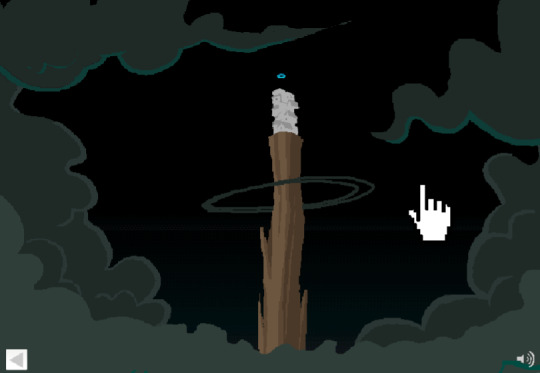
#homestuck#reaction#im SO SO SO SO excited for act 4 and i wanna devote my full attention to it#but not posting any more until i finally finish eoa3#which should be tomorrow? hopefully?#it is a very normal length post (LYING!!!!)#also we won the super bowl thank you homestuck thank you power of act 4 lowas <3#chrono
23 notes
·
View notes
Text
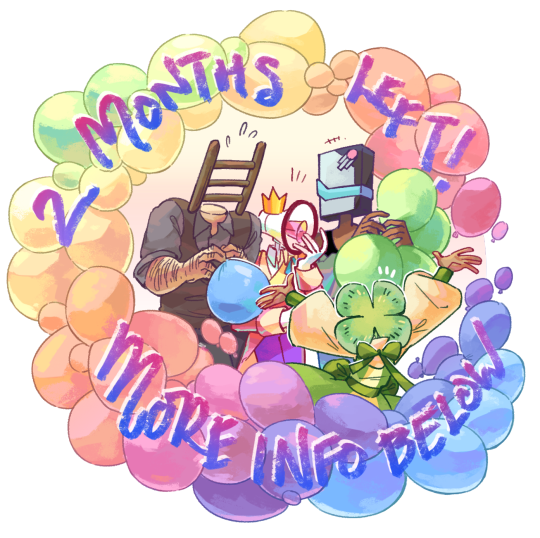
WELCOME TO THE 10TH ANNIVERSARY OF THE OBJECT HEAD ZINE!
2 months left!
In celebration, the 2024's edition will be a Grab Bag - draw whatever object head you like (so long as it fits the guidelines, see below). In Lieu of a theme, all submissions MUST HAVE ASHLEY (the megaphone mascot) in the piece! Feel free to make him as large or as small as you want in the composition. He can be hanging out with your characters or he can be on a flyer, just so long he's somewhere in the picture! Reference of all his outfits can be found here. But don't feel like you're restricted to his previous outfits. Feel free to dress him up in anything you'd like. Content is also free for whatever! You want to date the lil man? Go for it! You want to tease or go on the attack? Also fine! Ignore him and let him live his life? Sure thing.
ALL submissions will be accepted as long as they fit guidelines and each person has a limit of up to 3 submissions. Submit your pieces to the zine email objectheadzine(@)hotmail(.)com along with the email/website/name you’d like to be credited as. (Feel free to omit emails if that is more comfortable). When you’ve finished your piece(s), you are allowed to post them to your blogs as long as you link back to the zine blog! This will be a DIGITAL ZINE ONLY and will be available free upon completion (donation optional).
The guidelines are as follow:
Illustration-quality works in either digital or traditional mediums. Both colour and b/w acceptable; background required. *BG can be as simple as a pattern or colour block! Avoid utilizing a camera to submit your images, please use a scanner.
The default size will be 6″x9″, 300 dpi (1800px x 2700px) but feel free to go larger or smaller, so long as it follows those proportions. Please work in a vertical format.
For consistency’s sake, keep faces to a minimum (You can have eye(s) or you can have mouth(s) but don’t have both in a humanoid arrangement.)
Ashley, the megaphone head mascot, must be included in your piece. He can be small in the picture or a large factor but he must be included. When submitting, if he is not obvious, please point him out to me. References are found here.
Please go for original characters (or fanart of your friend’s characters) and not so much established object heads (e.g. the popcorn and soda heads from No More).
If you want to include humans, that’s fine as well but keep the ratio of people to object heads 1:1.
Content should be at most PG-13: Romance is fine but after-hours business should not be implied, Blood is fine but no gore. In the end, use your common sense.
Feel free to draw a comic or just an illustration! A comic counts as one submission.
Some facts about Ashley that could help with your piece: He's 5'2", he's of Chinese nationality, he's a TV show host, he's a bubbly, happy-go-lucky kind of guy and he has a Samyoed dog named Cotton!
Note that if a submission does not meet the above guidelines, I will either reject your submission or suggest improvements that would help your piece fulfill them. Please email me at objectheadzine(@)hotmail(.)com if you have any further questions and I’ll do my best to reply promptly. If you do not receive a message from me within a few days, please send it again. Final pieces submitted should be either in PNG or a one layer PSD file format.
Want to share your piece as you're working on them? Come on over to the Object Head Zine discord!
THE DUE DATE FOR SUBMISSIONS IS NOVEMBER 9TH.
230 notes
·
View notes
Text
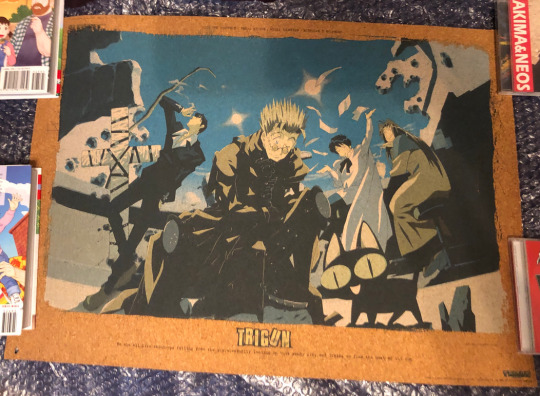
screaming and crying the poster arrived and i finally have the full image and the artist name, it is indeed official and was illustrated by Yoshimitsu Ohashi, one of the animators/directors who worked on the anime!!
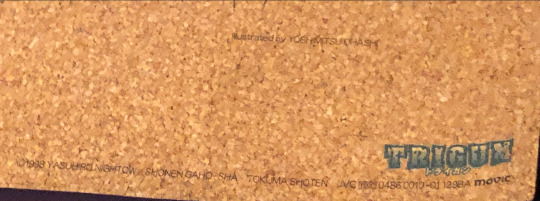
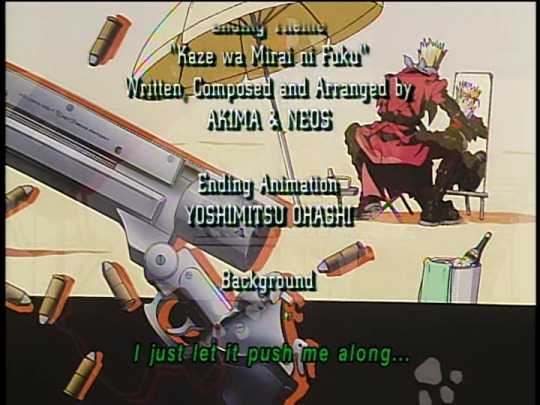
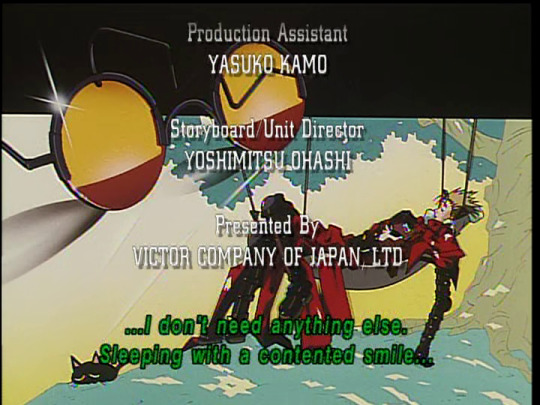
it's printed on cork which is very bizarre and the image is very sunbleached but i am beyond happy to see the full image FINALLY after years of using this partial scan i found on anime galleries dot net in like 2009 as a desktop wallpaper/just loving the image in general haha, here's that scan:

and here it is on my desktop and the poster together !!
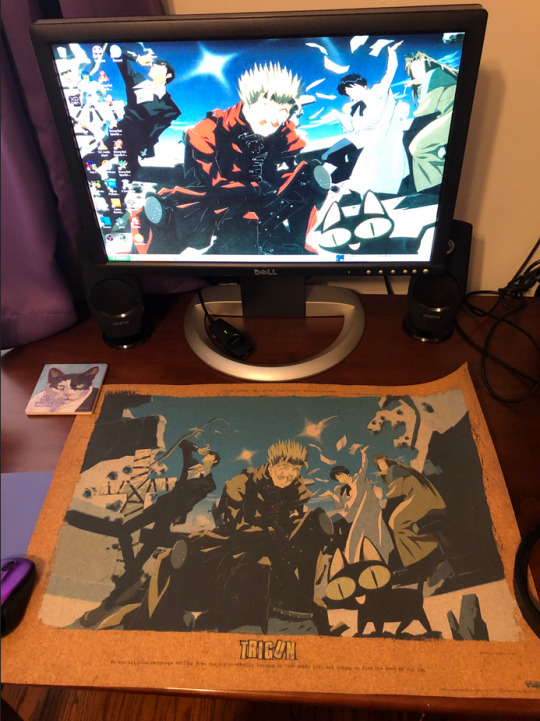
not sure if i will be able to scan it, even using the library's large format scanner, but i'll try and get better pics of it soon !!! ahhh
#trigun#trigun 1998#vash the stampede#nicholas d. wolfwood#meryl stryfe#milly thompson#kuroneko-sama
68 notes
·
View notes
Text
Creative year in review 2024
1. I have a tradition of looking over the previous year from a creative bent. I tend to start with success/failure rates submitting to open calls. This year has been pretty kind. 15 submissions with 7 Yeses. That's a 47% success rate, which might be my best ever. Certainly compared to last year where I had a 100% failure rate! (which was unprecedented). Also in previous years I had ended up peppering these submissions, but in more recent times they have been paired back and slightly more targeted.
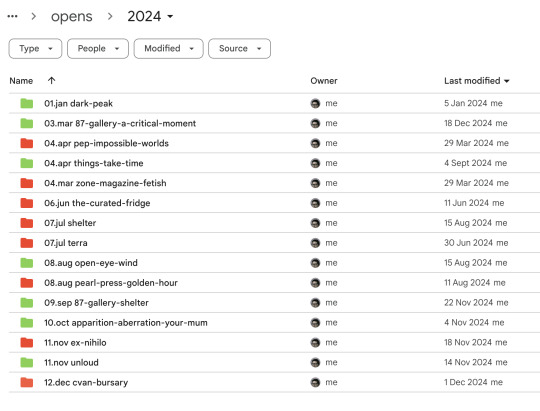
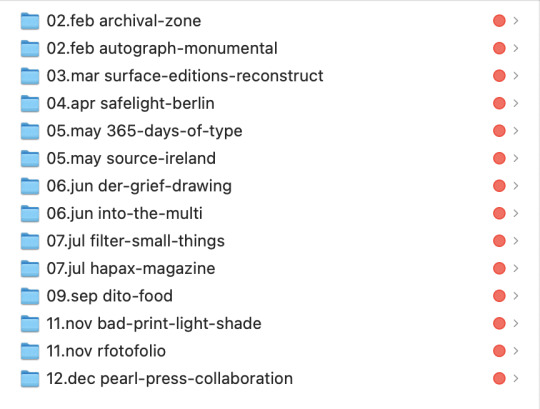
2. Of course submitting to open calls is only a small part of the whole spectrum. One of the biggest things I got out of the door in 2024 was XXto2, a (thick) zine I made with the super talented Tyrone Williams. We had been hatching the project for a while and were approaching publishers, despite a whiff of interest from a couple of small independent presses we ended up self-publishing the project. We launched at an event organised by the wonderful Photomafia studios (run by Joe Westley and Alex Macchiarelli). We put up a small, very haphazard exhibition and sold some zines. There are a handful left at: https://slackwise.org.uk/shop/xxto2/

3. What is quite notable this year is that I have hardly taken any photographs. I started working on a a huge project earlier in the year, but didn't make much headway. In fact I have only just sent off two rolls of film to be developed at the end of December. The only other photography I seemed to have engaged in are instant Fuji Instax images taken on the large format camera (with a Lomograflok back). I had been thinking though, when people ask and realise how expensive large format film is, I think even in my busiest periods I might only shoot 20 4x5 negatives in a single year and very often less.

4. In August our studio, studio MALARKEY hosted its first arts event since we set up shop. It was coordinated with NN Contemprary and called NNights. There were several venues around the town hosting arts events for one evening in early August. The footfall was very good and we had some curious visitors to our studio.


5. Probably the biggest thing I was involved in this year was the show we curated at studio MALARKEY called 'Apparition / Aberration / Your Mum'. This brought together 22 internaitonal artists presenting an array of work centered around themes of witchcraft, metaphysics, sacred geometry, the unknown and conjuring with a sprinkling of humour. I also showed a work in this exhibit. I was formulating the idea in June and gave myself a September deadline to take a single photograph. The image I made is a reworking of the Four of Cups Tarot card. But by far the biggest boon was contacting the artists, logistics, ordering prints, curating then mounting the show. Very proud of this one.
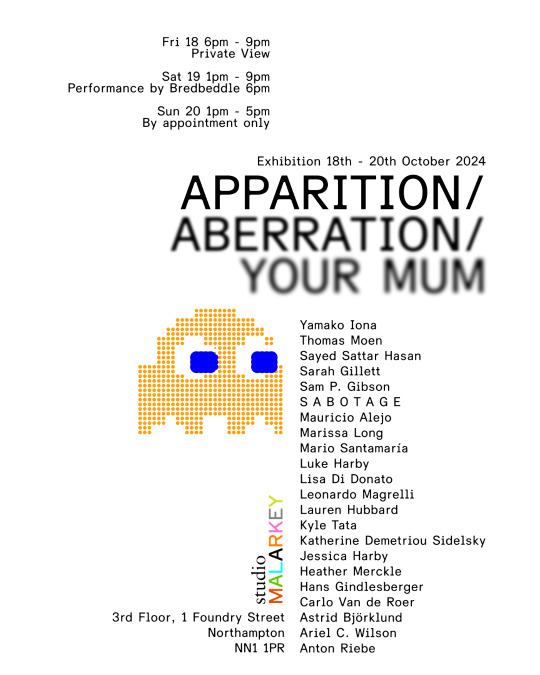


6. Another big thing for this year seemed to be purchasing (or gifted) artists books and zines. I don't think I have ever highlighted this in previous years, but 2024 seemed notable. I bought publications by Andreas Olesen, James Casebere, Lynn Cohen, Ariel C. Wilson, Al Palmer, Tyrone Williams (my collaborator from earlier this year), Billy & Hells (who included a lovely artists proof print), Lewis Baltz, Lauren Hubbard, Hikaru, Joe Westley and an extraordinary book called Made of concrete - 2011, from a trio of artists Sami Benhadj Djilali, Tarik Hayward and Guy Meldem (image pictured).


7. Odds and sods: I finally got a scanner (very affordably) that can cope with 8x10 negatives. I bought a 3m long pneumatic cable release (see next point). Very tangential: I got to see Melt-Banana perform live (this was on my bucket list). I mothballed my bot, Glyphbot. I built a new website for a very discerning customer, Jessica Harby. I backed a Kickstarter that is making a digital leaf shutter for large format cameras. Leaf shutters have not been manufactured since 2016.

8. What is next? I am working on a book (literally as we speak). Like most of my projects it has been delayed, was hoping to put it out this year, but it will roll into next. I have taken the final photographs for it, now comes the arduous task of layout. Hoping to publish it with a local artist friend who has a small press and is an all round mensch. In the summer as part of NNights I am hoping to open MALARKEY to use as a portrait studio. I have an old 5x7 camera (see above). Earlier this year I bought 4 film holders for it (these are quite hard to come by in the UK) plus the seller threw in 2 boxes of black and white film. I want to get sitters to take their own portraits using a very long 3m cable release I managed to pick up. I plan to take the portraits in a very narrow corner of the hoist room (a little annex to our studio). Think Irving Penn, German Expressionist cinema and this lovely old portrait by Cecil Beaton.
Err that's it!
You can peruse the 2023 review here (if you want).
8 notes
·
View notes
Text
Die for a Corpse
Read here on Ao3!
Febuwhump 2024 | Day 6 | Prompt 6: “You lied to me.”
Bad Things Happen Bingo: Cradling someone in their arms.
Rated: T | Words: 960 | Summary: Tech tries to help a fatally injured trooper. [Character Focus: Tech, OC]
“Medic!”
Troopers ran past, not looking at, but carefully avoiding contact with, the two clones huddled in the mud.
“Please,” the trooper sitting upright beseeched whoever might listen, “we need a medic!”
In his arms, the other clone choked for breath, a blaster hole through his chestplate. He didn’t have long. That much Tech gathered as he approached the pair. He knelt before them. “I am not a medic, but I have medical training. I will assist with whatever I can.”
“Thank you,” the reg said, adjusting his grip on his brother.
Tech gave a short nod and slid his pack off. “My name is Tech.”
“I’m Blade,” the uninjured reg said, “this is Shank.”
Shank coughed, a gurgling sound deep in his lungs. Blood dribbled ominously from the corners of his lips, but Blade quickly wiped it away, as if erasing the evidence of internal damage would be enough to save his brother. It wouldn’t be. Nothing would be enough.
“I’m going to give him a hypo for the pain,” Tech said.
“He’s going to be okay,” Blade told him. “We just need to keep him stable until we can get him to the med center.”
Tech did not answer, finding the correct hypo and injecting it into the dying clone’s neck.
“Is it safe to move him?” Blade asked. “We should probably take cover.”
Shank’s safety at this point did not worry Tech; however, for Blade’s sake, Tech said, “That would be advisable.”
Blade took his brother’s torso and Tech took Shank’s legs. The mud squelched under their boots, making it laborious to stay upright with the awkward weight between them. They managed to make it to a large rock formation that gave some barrier from the warzone raging around them.
“Tech, where are you?” Hunter’s voice filtered through his private comm channel.
Tech finished helping Blade settle Shank against the natural barrier before he picked up his comm. “I am assisting with a medical situation.” He was not going to say that he was helping a reg die comfortably, even if that was all the medical assistance he could offer in this case.
“Who’s injured?” comes Hunter’s next question.
Tech hesitated, trying to think of a way to tactfully say it wasn’t one of their brothers – one of the Batch – without causing distress to the reg hovering over his fallen comrade. “One of the company’s troopers,” he said after a moment.
“Be careful,” Hunter said, the guilted relief evident even through the static of the comm.
“Roger that,” Tech agreed before signing off. He turned his attention back to the two troopers in his company.
“Shouldn’t we staunch the wound?” Blade asked.
Shank whined and turned his head toward Blade’s voice. Blade reached out and took one of Shank’s hands. “I’m here, brother. Just hang on. You’re going to be fine.”
“No,” Shank mumbled, voice taut with pain. He knew he wasn’t going to make it, Tech realized.
“Yeah,” Blade argued gently and crawled closer to wrap an arm around Shank’s shoulders. “Yeah, you’re gonna be just fine. You’ve survived worse, huh?”
Shank managed a grin, and Tech felt his heart pang with an awful despairing emotion. Even in his last, excruciating moments, this reg tried to be strong for his brother.
Blade looked at Tech. “Aren’t you going to help him? You said you would help him!”
Tech crouched on Shank’s other side, pulling out his portable med scanner and making a show of checking over Shank’s vitals. “We can try to staunch the wound, as you said; however, the damage is extensive. I don’t believe there is anything that can be done other than to keep him comfortable.”
“You mean you’re just going to let him die?” Blade stared at Tech, slack faced, horror burning behind the shiny wetness in his eyes.
Tech wanted to argue that he wasn’t letting Shank do anything. It was entirely outside of his control. He had done as he said. He’d done what he could. There was nothing more to be done, as awful as it was.
“Bl…Blade,” Shank whispered, voice transparent and weak. “It’s okay…t’s okay.”
“No,” Blade sobbed, kneeling over Shank so that their foreheads pressed together. He had one of Shank’s hands clasped tightly in both of his. “No, you can’t leave. You can’t die.”
With obvious effort, Shank reached up with his free hand and put it over Blade’s chest plate, where his heart was. “Here…vod…”
Tech averted his gaze, not wanting to intrude on such a private moment. He tried not to imagine if the roles were reversed, if he were saying goodbye to one of his own brothers on the field. He did not succeed.
Not even a minute passed before Shank’s labored breathing ceased, and Blade’s sobs intensified. Tech was prepared to give the grieving brother a few more minutes, but the order suddenly came to fall back.
“Blade, we have to go,” he said as he stood.
Blade shook his head. “I can’t leave him here,” he choked out.
“We must,” Tech urged.
“You go! I’m not leaving him behind!” Blade screamed at him.
Tech reached out and grabbed Blade’s arm, attempted to forcibly drag the trooper to his feet. “You will not be leaving him behind! He’s already gone! He would not want you to die for his corpse!”
Harsh and bitter as the words sounded coming out of Tech’s mouth, they seemed to rally Blade to his senses. He allowed himself to be pulled up and returned his helmet to his head. Tech then shoved him ahead to prevent the soldier from possibly circling back if left unsupervised.
He couldn’t save one brother, but he could help the other survive at least one more day.
END
✨Let me know if you’d like to be on my taglist!✨
Taglist: @followthepurrgil @isthereanechoinhere96 @amorfista @mooncommlink @arctrooper69 @nagyanna424
#febuwhump 2024#febuwhumpday6#prompt 6: you lied to me#bad things happen bingo#cradling someone in their arms#star wars#fanfiction#the bad batch#ao3 fanfic#ao3 writer#tbb tech#OC character death
27 notes
·
View notes
Text

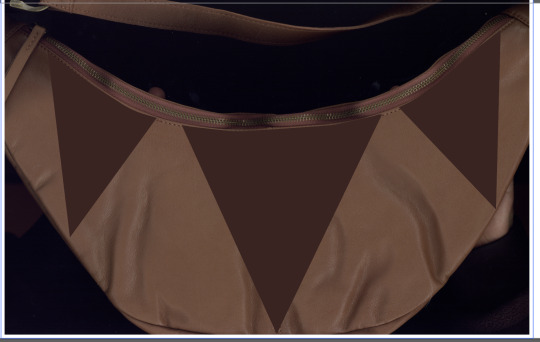
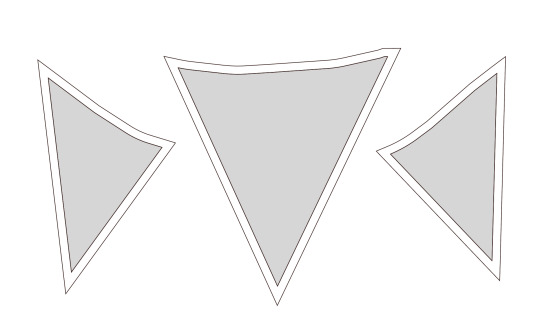


i adjusted a pre existing bag for my katara cosplay without sewing..! because 1: im not very good at sewing and 2: the bag had a very thick outside and lining so it would be hard to sew
i scanned the bag (luckily i have a large format scanner and the bag is flat.) and drew the triangles to scale over it in illustrator. then i took those triangles and made them into lines and added an outside edge because i wanted to fold them over to make the edges look cleaner.
i printed and cut out an outer and inner version of the triangles and traced the larger one, cut it out and then traced the inner one and used double sided tape to fold the edges in. not sure if i recommend the double sided tape, i got fabric glue later and would probably try that instead if i had to redo it.
then i did that for all 6 pieces and used fabric glue to apply it to the bag. i hope it will hold up..!!!!
5 notes
·
View notes
Text
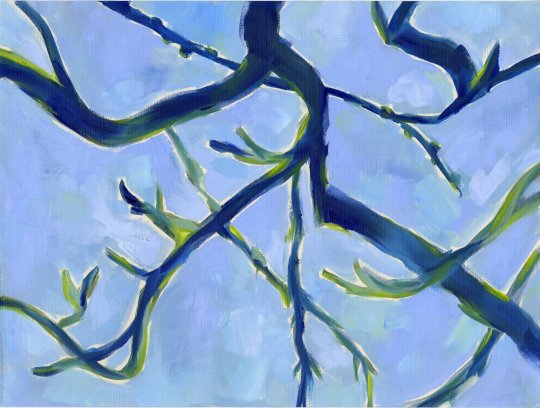
oil painting on paper i did of some branches outside like 2 years ago - 12x16 inches
#art#oil painting#its trees in da sky LOL#i used my schools large format scanner recently so now i get to post more drawerings id been sitting on forever!!#now i still need to figure out how to digitize the really big stuff. i have to..... photograph them (shivers in fear)#IM REALLY BAD AT PHOTOS they always end up super skewed no matter how careful i try to position the camera orz#but i will keep trying. i will try.....someday
4 notes
·
View notes
Text


My first results from "real" large format photography on actual film (as opposed to alternative methods like direct cyanotype).
Quick phone pictures snapped and inverted after development, while I wait for a chance to 3d-print the film holder for my scanner.
Shot on Arista Ortho Litho (rated for ISO 6) and developed at home in Cinestill df96 monobath.
#photography#large format photography#petzval#voigtlander und sohn#black and white film#film photography#film#film is not dead
3 notes
·
View notes
Text
3024 - ENEMY UNKNOWN
Weldry
Aurigan Directorate
20 December 3024
0430 hrs Local Time
The fog on Weldry settled like a death shroud over the hills and valleys, muffling sound and distorting sight. The Aurigan Directorate’s defensive line braced for attack, the soldiers uneasy in the gray haze that seemed to shift and whisper around them. Their scanners twitched with anomalies, struggling to process conflicting data. Then, the first tremor shook the earth—a slow, rhythmic pounding that grew closer with each impact.
“Contact! Ten o'clock!” a sensor officer shouted. Targeting computers flared to life, latching onto a massive silhouette advancing through the fog. It was tall, bird-legged, and had arms that ended in blocky weapons pods, a silhouette that momentarily triggered a "MAD" designation—Marauder—before flickering into "CAT," as the large boxy missile racks on its shoulders became visible. It was as though the targeting system couldn’t decide if it was dealing with a Marauder or a Catapult. The names switched rapidly a few more times before the system froze and dropped the tag entirely.
The shape loomed closer, chrome plating reflecting ghostly outlines in the mist. Twin arms raised, their monstrous weapons array blazed to life in unison. Lasers and missile salvos screamed forward. The first beam vaporized a Directorate tank, the armor turning incandescent before collapsing into slag. Missiles followed, a perfect arc of destruction that engulfed two infantry positions in fiery blasts. The soldiers barely had time to scream before the explosions swallowed them whole.
Further down the line, seismic sensors screamed warnings. Another machine emerged—a towering behemoth, its broad shoulders evoking the familiar silhouette of a Victor. But the machine’s towering height and the monstrous bulk of its arms triggered a reclassification: Atlas. The computer stuttered between the two designations before giving up, locking on with a blank “ERROR” tag. The machine’s optics flared a cold, calculating crimson, and it fired a pair of weapons mounted on its broad arms. Gauss slugs ripped through the fog, annihilating an entrenched command post in an instant. The sheer kinetic force sent debris and bodies scattering like broken dolls.
The Directorate’s soldiers fired back in desperation. Shells and missiles roared into the fog, detonating harmlessly against unseen defenses. There was no telling how much armor those giants bore, but whatever it was, it shrugged off return fire with contemptuous ease.
"Movement to the right!" someone yelled, panic creeping into their voice. Through the fog came another figure, its shape distorted and wrong. The legs—those awful, reverse-jointed legs—mimicked those of a Locust, but the body was impossibly large. The computer hesitated, cycling through options before spitting out "LOCUST?" followed by a cold, static-filled "UNKNOWN." The machine moved with terrifying speed, far faster than its mass should have allowed, its footfalls landing with bone-rattling force. Its weapons unleashed hell: autocannons tearing through infantry formations with mechanical efficiency - and doing so much faster than normal autocannons ought to.
The fog thickened as the assault continued. Explosions bloomed like flowers of flame in the mist. A fourth machine appeared, slender and impossibly agile for its size. It vaulted over wreckage with ease, its frame gleaming in the half-light. It resembled a Highlander at a glance, but its movements and frame were smoother, more graceful—like some monstrous dancer weaving through death. Its weapons fired in perfectly timed bursts, lances of energy disintegrating vehicles in rapid succession.
And then came the nightmare without a name: a machine too large, too unnatural to identify. The scanners could only mark it as "UNKNOWN." Its body was a patchwork of angular shapes, yet its presence in the fog was overwhelming. The quad-mounted guns on the ends of its arms fired once, two spinning and unleashing a hail of shell fire, the others firing enormous metallic shot, like God's own shotguns. Under that assault, a Directorate gunship disintegrated mid-air, the wreckage tumbling from the sky in a shredded heap. Then, it braced itself, and an immense cannon on its back fired into the air - the shell arcing almost lazily before screaming back down, splitting open as it did so and releasing a cloud of vapor, which then exploded, the massive fireball and concussion vaporizing and pummeling an entire infantry platoon. Four lasers fired from ita shoulders, vaporizing an unfortunate Directorate tank that foolishly rolled out to challenge it.
Panic set in as soldiers broke and ran. They fled blindly into the mist, chased by the ghostly echoes of footfalls and the distant flare of weapon fire. No matter how far they ran, the tremors followed, relentless and inescapable. The fog obscured everything except fear. What were those machines? Where had they come from? No one had answers. All they knew was that death had come to Weldry, in forms that defied logic, wielding power beyond anything the Directorate had ever seen.
Further 'Mechs joined the fray, these mercifully more familiar in design - but no less deadly. Sixteen other mechs walked and fought alongside the giants of silvery death - a tide of metal the Directorate troops quickly realized they no hope against. Chief among the new arrivals were a heavily modified Marauder in garish slapdash neon, whose pilot seemed to delight in stomping on enemy 'Mechs with its massive taloned feet, and a blue-and-silver Thunderhawk, its lostech pulse lasers blazing away at infantry, mechs, and vehicles alike, stuttering pulses of light searing and melting flesh and armor while desperate infantry fired back, their rounds pinging harmlessly off the paintwork.
By the time the morning sun broke through the fog, the battlefield was a graveyard of molten metal and shattered earth. The chromed titans had vanished, leaving only ruin and terror in their wake. Survivors whispered of gleaming monsters that moved like demons, their mechanical bodies warped and unnatural. Tales of the silver giants spread quickly through the ranks—warnings of horrors that did not belong to the Inner Sphere.
5 notes
·
View notes
Note
i have a bunch of magazines that i want to scan and was wondering about how you do it. when you scan stuff, is your process destructive or non-destructive of the original objects? what kind of scanner and software are you using? thanks, love your work!
i'll have to add this to my pinned post because i get these questions a lot.
i have an hp envy 6055e, which is not like "high end” at all, and i just use the software it comes with.
i usually scan pages in a book as-is, without ripping them out or anything. (with non-library books that are old, sometimes pages fall out on their own.)
there's nothing special or fancy happening here, and i could definitely invest in a better and/or a large format scanner, etc. but i really just don't care enough and it's not like i'm getting paid for this lmao
25 notes
·
View notes
Text
Webcomics at Day 100 #5: Bob and George

Pages read: 4/1/2000 – 4/5/2002; 718 pages (including author’s commentary)
Reason for selection: Bob and George was a pioneer of the ‘sprite-based’ comic genre, where video game sprites (or custom sprites) are used in place of original character art to reduce the artist’s workload. B&G is also famously meta, almost entirely disregarding the fourth wall.
Original run: 4/1/2000 – 7/28/2007; daily updates with 2658 total pages. Completed before Homestuck began.
Content warnings: homophobia and mild ableism (comic), cultural insensitivity, centrism, and severe ableism (author’s commentary)


Overall thoughts:
‘Now, there is something to say of the nature of creativity. How creating a fictional world makes you akin to a creator god. You could say that, sure - if you were fucking nuts. It's a fucking story. It's not real. I don't give a fucking dick's shit how many readers there are, how fucking huge it is - every fictional world is exactly that, fictional.’ – John S.
‘The jokes are bad, the art is plagiarism, and I firmly believe the only people that can appreciate this comic are 14 years old or younger.’ – Cesar R.
Some people on the internet like to spend large amounts of time talking about things they hate, and both of the above quotes come from Bob and George reviews on blogs dedicated to discussing webcomics the authors think are bad. I don’t personally have much respect for the Avowed Hater, but I cannot express how much I love these quotes.
However. I think this webcomic rules.

Here’s a brief overview. David Anez invents two characters – the titular Bob and George – in middle school. Aged 20, at the turn of the millennium, he decides to make a webcomic about these characters, despite having no idea how to draw. He plans to start on April 1, 2000, but can’t source a scanner by then, so begins making placeholder comics using 8-bit and 16-bit sprites from Megaman games, telling a potential audience that the comic isn’t ready yet – meaning that from day one, Megaman knows that 1. he’s in a comic created by an author, and 2. he’s not supposed to be the main character.
Months later, Anez sources a scanner and begins to draw Bob and George. They’re two college aged brothers who are also a superhero-supervillain duo. By this point the strip already has readers, and they don’t like this format as much. It’s also more difficult for Anez to make, so he returns to the Megaman sprite comics, but also edits some sprites into representations of both Bob and George, who become characters transported to the Megaman universe from another dimension. The story cycles through ‘retellings’ of the first six Megaman games interspersed with original storylines, dimension hopping, time travel, predestination paradoxes, alternate versions of characters, fan created characters, at least two characters who are explicitly the author, and other characters reading the comic they’re a character in. It goes from a simple story about George passing the days at his summer job before college, to a huge, whirling, spiraling mess of continuity and temporality.
In July 2007, after just over seven years, Anez brings the story to a conclusion, goes through the archives to add author’s commentary to each and every strip, and then… disappears. He focuses on his day job and his wife, and he never does another internet project again.

I genuinely love amateur art. I think Anez can be too self-deprecating in his author’s commentary – because he’s right, the jokes can be repetitive and don’t always land, the hand drawn art is ridiculous, the characterization is inconsistent and the ideas are unoriginal, but art can be all those things and still be meaningful. ‘I could have made this’ should be a compliment. It should mean: this makes me think I could create; you have achieved something and have inspired me by doing so, because this is within my grasp, too.
Unlike Cesar R. above, I don’t think sprite comics are plagiarism – these are firmly transformative works. Anez rearranges the Megaman sprites, gives them dialog and puts them in situations, and recaps and expands on the game storylines. He credits Capcom with the sprites’ creation, and wrote a homage to the games, not a substitute for them. However, due to the copyright issues, sprite comics are famously un-monetizable. Some original-art comics were occasionally able to turn webcomics into income, but even when Bob and George was at its peak of 25,000 daily site visitors, Anez wasn’t able to sell character merchandise or books and could only source small donations via PayPal. In this way, he sits among hundreds of big name fans who have created wildly popular fanfiction and fanart that’s almost entirely unpaid labor.
Anez’ author’s commentary is sometimes highly problematic but gives fascinating insights into his process. On October 19 2001, Anez included the Author - an established character - in the day's comic, wearing a helmet for the first time. In the author's commentary, he states that 'the Helmeted Author was never intended to be a new character' and that the helmet's inclusion was necessary due to artistic limitations with the sprites. However, the Helmeted Author stuck around and became a separate and important character. Similar instances recur in the commentary, where an accidental continuity error or an out-of-character moment ends up being folded into the overall story, becoming smooth and seamless in retrospect despite being entirely unplanned. It’s an open and honest look into how serial narratives work in practice.
An ice cream joke followed immediately by a self-deprecating joke is pretty standard issue for this drivel. Seriously, look at yourself. You're reading a sprite-based webcomic with Megaman characters, and they were just arguing about the merits of ice cream. I can't believe you read this stuff. Hell, I can't believe I wrote it. That being said, it's a fun way to waste your time, isn't it? – David Anez (author’s commentary for 10/23/2001)

Relevance to Homestuck: [ooc – vague spoilers for the entirety of Homestuck]
Bob and George feels like a rough draft for a LOT of things Homestuck would end up doing in (relatively) more artful, complex ways. It’s often painfully explicit about what it’s doing, hammering its own themes and experiments into the ground via the small amounts of dialog there’s space for instead of advancing a plot – but it’s the earliest webcomic I’ve personally looked at that’s actually testing what the medium is capable of. Anez begins with a simple four-panel strip, and primarily sticks to this style throughout, but from early on he thinks that some strips would look better animated and that the fourth-panel punchline format is a ‘severe restriction’, especially with battles.
As time goes on he begins to experiment with art size, style and aspect ratio, animate part or all of some strips, include interactive strips where readers can click through the panels at their own pace, and include panels in the wrong orientation or that aren’t physically connected as they should be – all elements that would become hallmarks of Homestuck. Characters even comment on the change in panels, and in art style (such as their own change from 8-bit to 16-bit to 32-bit sprites). In commentary for July 2nd 2001, Anez says, ‘I suppose these comics are my non-animated contributions to the infinite canvas nature of webcomics, huh?’
B&G never reaches the extremes of Homestuck, but it’s still a multimedia story. It recaps its own storylines, celebrates its own anniversaries, and folds fan contributions into its main arcs. Prominent fan creators have custom sprites made of them which are included in panels, including the Second Party arc, where a character ‘interviews’ fancomic creators and references their work and their activity in the forums and chatrooms. As such, to have a complete understanding of B&G, it’s necessary to also read prominent fanworks, and to understand its surrounding community – much of which is no longer archived. ‘Subcomics’ are differentiated and elevated from officially-hosted ‘fancomics’ which are again differentiated from fancomics which didn’t make the cut, and a hierarchy based on official recognition is born in the community, not unlike the elevation of Homestuck fanartists to official contributors.
B&G is similar to Homestuck in themes as well as form. From early on it asks questions about the meaning of ‘reality’ and an ‘official’ or ‘canon’ timeline, and explores ideas of what it means to have free will (or not) when you’re a character in a story, you know what’s going to happen next, you’ve met the guy who wrote it, and that guy may or may not be dead. It’s about physically two-dimensional characters who are in both a video game and a comic, and continually blurs the boundaries between those mediums. In both comics, an author – born in 1979 – has grown up witnessing the birth of technology that is going to change everything about how the world operates and break down our interactions with physical space and time, and they’ve made weird, longform, and often technically ‘bad’ art exploring what that means. These comics are holding hands as two links in a chain of a broader artistic movement.
Continue reading? I cannot WAIT to read the rest of Bob & George.

17 notes
·
View notes
Text
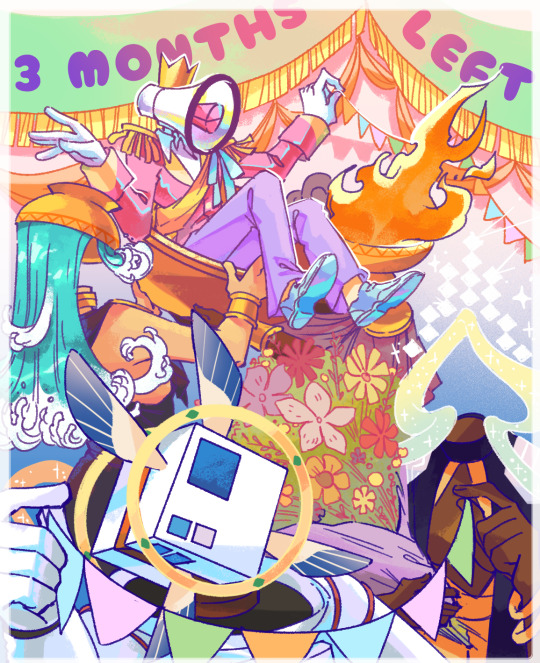
WELCOME TO THE 10TH ANNIVERSARY OF THE OBJECT HEAD ZINE!
3 months left!
In celebration, the 2024's edition will be a Grab Bag - draw whatever object head you like (so long as it fits the guidelines, see below). In Lieu of a theme, all submissions MUST HAVE ASHLEY (the megaphone mascot) in the piece! Feel free to make him as large or as small as you want in the composition. He can be hanging out with your characters or he can be on a flyer, just so long he's somewhere in the picture! Reference of all his outfits can be found here. But don't feel like you're restricted to his previous outfits. Feel free to dress him up in anything you'd like. Content is also free for whatever! You want to date the lil man? Go for it! You want to tease or go on the attack? Also fine! Ignore him and let him live his life? Sure thing.
ALL submissions will be accepted as long as they fit guidelines and each person has a limit of up to 3 submissions. Submit your pieces to the zine email objectheadzine(@)hotmail(.)com along with the email/website/name you’d like to be credited as. (Feel free to omit emails if that is more comfortable). When you’ve finished your piece(s), you are allowed to post them to your blogs as long as you link back to the zine blog! This will be a DIGITAL ZINE ONLY and will be available free upon completion (donation optional).
The guidelines are as follow:
Illustration-quality works in either digital or traditional mediums. Both colour and b/w acceptable; background required. *BG can be as simple as a pattern or colour block! Avoid utilizing a camera to submit your images, please use a scanner.
The default size will be 6″x9″, 300 dpi (1800px x 2700px) but feel free to go larger or smaller, so long as it follows those proportions. Please work in a vertical format.
For consistency’s sake, keep faces to a minimum (You can have eye(s) or you can have mouth(s) but don’t have both in a humanoid arrangement.)
Ashley, the megaphone head mascot, must be included in your piece. He can be small in the picture or a large factor but he must be included. When submitting, if he is not obvious, please point him out to me. References are found here.
Please go for original characters (or fanart of your friend’s characters) and not so much established object heads (e.g. the popcorn and soda heads from No More).
If you want to include humans, that’s fine as well but keep the ratio of people to object heads 1:1.
Content should be at most PG-13: Romance is fine but after-hours business should not be implied, Blood is fine but no gore. In the end, use your common sense.
Feel free to draw a comic or just an illustration! A comic counts as one submission.
Some facts about Ashley that could help with your piece: He's 5'2", he's of Chinese nationality, he's a TV show host, he's a bubbly, happy-go-lucky kind of guy and he has a Samyoed dog named Cotton!
Note that if a submission does not meet the above guidelines, I will either reject your submission or suggest improvements that would help your piece fulfill them. Please email me at objectheadzine(@)hotmail(.)com if you have any further questions and I’ll do my best to reply promptly. If you do not receive a message from me within a few days, please send it again. Final pieces submitted should be either in PNG or a one layer PSD file format.
Want to share your piece as you're working on them? Come on over to the Object Head Zine discord!
THE DUE DATE FOR SUBMISSIONS IS NOVEMBER 9TH.
264 notes
·
View notes
Text
3D Laser Scanning – Types | Benefits | Applications

3D Laser Scanning
3D laser scanning techniques have been developed since the end of 1990s for 3D digital measurement, documentation and visualization in several fields including 3D design in processing industry, documentation and surveying in architecture and infrastructure. By using a 3D laser scanner, a tunnel or underground construction can be digitized in 3D with a fast-scanning speed and high resolution up to “mm” level.
The scanning data consists of not only XY-Z co-ordinates but also high-resolution images, either gray-scale (with reflex intensity data) or color (with RGB data), and then can be transformed into a global co-ordinate system by control survey. Therefore, any rock engineering objects with its as-built situation can be quickly recorded as the 3D digital and visual format in a real co-ordinate system and provides a potential application for 3D measurement, documentation and visualization with high resolution and accuracy.
In modern engineering the term ‘laser scanning’ meaning is the controlled steering of laser beams followed by a distance measurement at every direction. This method, often called 3D object scanning or 3D laser scanning, is used to rapidly capture shapes of objects, buildings, and landscapes.
What is 3D Laser Scanning?
3D laser scanning is a non-destructive, non-contact method of capturing data that can be used for rapid and accurate creation of three-dimensional files, for archiving and digital manipulation. A 3D laser scanner emits a narrow laser beam that hits a target object, gathering millions of closely spaced measurements in a matter of minutes. These scanned measurements are put together and grouped into compressed point cloud databases, which can be processed to generate a 3D dense representation of the object.
3D Scanners Bridging Physical and Digital Worlds
3D scanners are tri-dimensional measurement devices used to capture real-world objects or environments so that they can be remodeled or analyzed in the digital world. The latest generation of 3D scanners do not require contact with the physical object being captured.
3D scanners can be used to get complete or partial 3D measurements of any physical object. The majority of these devices generate points or measures of extremely high density when compared to traditional “point-by-point” measurement devices.
How 3D Scanning Works?
Scanning results are represented using free-form, unstructured three-dimensional data, usually in the form of a point cloud or a triangle mesh. Certain types of scanners also acquire color information for applications where this is important. Images/scans are brought into a common reference system, where data is merged into a complete model. This process — called alignment or registration — can be performed during the scan itself or as a post-processing step.
Computer software can be used to clean up the scan data, filling holes, correcting errors and improving data quality. The resulting triangle mesh is typically exported as an STL (STereoLithography or Standard Tessellation Language) file or converted to Non-uniform Rational B-Spline (NURBS) surfaces for CAD and BIM modeling.
Types of Laser Scanning
1. Airborne Laser Scanning (LiDAR)
Airborne laser scanning (LiDAR = acronym for ‘Light detection and Ranging’, also LIDAR) is a scanning technique for capturing data on the features of, and objects on, the surface of the earth. It is an important data source in environmental studies, since it is capable of mapping topographic height and the height of objects on the surface to a significant vertical and horizontal accuracy, and over large areas. Airborne laser scanning is an active remote sensing technology able to rapidly collect data from vast areas.
2. Terrestrial Laser Scanning
Terrestrial Laser Scanners (TLS) are positioned directly on the ground, or on a platform placed on the ground, and are normally mounted on a tripod. TLS is, in its essence, an improved version of the laser tachometric measurement toolkit (the so-called total station) that is based on the combination of distances and angles measured from a fixed point. Tachometric laser scanners digitize objects of interest with a frequency of 1000 Hz or higher. Each point is measured per one oblique distance and, additionally, two orthogonal angles are measured. Most TLS are long-range devices. Nowadays, a great variety of TLS is available with different range and pulse frequencies.
3. Handheld (portable) Laser Scanning
There has recently been an increase in the application of handheld scanners. Their basic advantage is their portability. Scanners that are attached to light portable stands fall in this category as well, even though they are not ‘handheld’ in the true sense of the word. Primary used in reverse engineering, nowadays they are very often employed in digital documentation of moveable cultural heritage objects.
4. Long- and Short-Range Laser Scanning
Long-range laser scanning is tailored for surveying and monitoring expansive areas or structures. Using high-powered lasers and advanced optics, it covers distances from yards to miles/meters to kilometers. Employing time-of-flight or phase-based technologies, it finds applications in geological surveys, urban planning, infrastructure monitoring, and archaeological site mapping. Short-range laser scanning focuses on high-precision tasks within confined spaces. Covering distances from centimeters to meters/ feet to yards, it utilizes structured light or laser triangulation. Widely used in industrial metrology, 3D scanning, quality control, and cultural heritage preservation, it excels in capturing fine details with accuracy.
3D Scanning File Formats
TZF: This format is a Trimble scan files in a zipper format. The software exports the current project as a folder with:
• One TZF format file per station • One TCF format file per station if the station has been acquired with images
E57: This format is a file format specified by the ASTM (American Society of Testing and Materials), an international standards organization. The E57 format supports two types of data: Gridded Data and Non-Gridded Data. Gridded Data is a data which aligned in regular arrays.
E57 Gridded Files: The software exports the current project as one LAS 1.2 format file.
E57 Non-Gridded Files: The software exports the current project as one LAS 1.2 format file.
PTX: This format is an ASCII based for scan file format. The software exports the current project as one LAS 1.2 format file.
LAS, Non-Gridded: The format is public file format for interchanging 3-dimensional point cloud data between users. It is binary-based and has several versions: 1.0, 1.1, 1.2, 1.3 and 1.4. The application exports the current project as one LAS 1.2 format files.
POD, Non-Gridded: The POD (Point Database) file format is Bently Pointools’ native point cloud format. The software exports the current project as one POD format file. Points, color, intensity and normal (if available) information are exported.
RCP: This format file is a project file for Recap from Autodesk. The software exports the current project as one RCP format file.
TDX: TDX is Trimble Data eXchange file format, commonly used in some Trimble software applications like TBC (Trimble Business Center) or RealWorks. The software exports the information listed below:
• Stations with registration sets • Created panorama(s) • Measured points • Leveling information
Benefits of 3D Laser Scanning
3D laser scanning has become an indispensable tool across many industries due to its ability to capture highly detailed and more accurate 3D data. Here are some of the key benefits of 3D laser scanning:
High Accuracy
Laser scanning provides extremely accurate measurements, making it effective for applications where precision is critical, such as engineering, construction, and product manufacturing.
Rapid Data Capture
Laser scanners can quickly collect a large amount of data, reducing the risk associated with scanning high buildings and improving field staff safety.
Non-contact Technology
Laser scanning is noninvasive and doesn’t require physical contact with the object or environment being scanned, making it ideal for fragile, hazardous, or hard-to-reach locations.
Comprehensive Documentation
Laser scanning creates detailed and comprehensive digital records of objects, buildings, or landscapes, which are invaluable for preservation and historical archiving.
Visualization
Data from 3D laser scans can be used to create highly realistic visualizations, aiding in the design, analysis, and communication of complex structures and spaces.
Clash Detection
When integrated with building information modeling (BIM), laser scanning helps identify clashes between design plans and existing structures, reducing costly construction errors.
Applications of 3D Laser Scanning
3D Laser Scanning is used in numerous applications: Industrial, architectural, civil surveying, urban topography, reverse engineering, and mechanical dimensional inspection are just a few of the versatile applications. 3D laser scanning technology allows for high resolution and dramatically faster 3D digitizing over other conventional metrology technologies and techniques. Some very exciting applications are animation and virtual reality applications.
1. Construction Industry and Civil Engineering
a. As-built drawings of bridges, industrial plants and monuments b. Documentation of historical sites c. Site modelling and lay outing d. Quality control e. Quantity surveys f. Freeway redesign g. Establishing a benchmark of prre-existing shape/state in order to detect structural changes resulting from exposure to extreme loadings such as earthquake, vessel/truck impact or fire. h. Create GIS (Geographic Information System) maps and Geomatics
2. Reverse Engineering
Reverse Engineering refers to the ability to reproduce the shape of an existing object. It is based on creating a digitized version of objects or surfaces, which can later be turned into molds or dies. It is a very common procedure, which has diverse applications in various industries. Non- contact 3D laser scanning allows even malleable objects to be scanned in a matter of minutes without compression, which could change their dimensions or damage to their surfaces. Parts and models of all sizes and shapes can be quickly and accurately captured. 3D laser scanning for reverse engineering provides excellent accuracies and helps to get products to market quicker and with less development and engineering costs. 3D Laser scanning provides the fast, accurate, and automated way to acquire 3D digital data and a CAD and BIM model of part’s geometry for reverse engineering when none is available. Also, new features and updates can be integrated into old parts once the modeling is accomplished. A practical mechanical and civil engineering application would be to assist in the production of "as built" data and documentation. Currently, many manufacturing or construction activities are documented after the actual assembly of a machine or civil project by a designer or engineering professional. 3D laser scanners could expedite this activity to reduce man-hours required to fully document an installation for legacy.
3. Mechanical Applications
Reverse engineering of a mechanical component requires a precise digital model of the objects to be reproduced. Rather than a set of points a precise digital model can be represented by a polygon mesh, a set of flat or curved NURBS surfaces, or ideally for mechanical components, a CAD solid model. A 3D scanner can be used to digitize free-form or gradually changing shaped components as well as prismatic geometries whereas a coordinate measuring machine is usually used only to determine simple dimensions of a highly prismatic model. These data points are then processed to create a usable digital model, usually using specialized reverse engineering software.
4. Civil Applications
Civil activities could be for a roadway periodic inspection. The digitized roadway data could be contrasted to previous roadway 3D scans to predict rate of deterioration. This data could be very helpful in estimating roadway repair or replacement costing information. When personnel accessibility and/or safety concerns prevent a standard survey, 3D laser scanning could provide an excellent alternative. 3D Laser scanning has been used to perform accurate and efficient as-built surveys and before-and after construction and leveling survey.
5. Design Process
Design process including: a. Increasing accuracy working with complex parts and shapes b. Coordinating product design using parts from multiple sources c. Updating old CD scans with those from more current technology d. Replacing missing or older parts e. Creating cost savings by allowing as-built design services, for example: automotive manufacturing plants. f. “Bringing the plant to the engineers” with web shared scan and saving travel costs.
Conclusion
3D laser scanning equipment senses the shape of an object and collects data that defines the location of the object’s outer surface. This distinct technology has found applications in many industries including discrete and process manufacturing, utilities, construction. Laser scanning technology has matured and developed in the past two decades to become a leading surveying technology for the acquisition of spatial information.
The high-quality data produced by laser scanners are now used in many of surveying’s specialty fields, including topographic, environmental, and industrial. These data include raw, processed, and edited dense point clouds; digital terrain and surface models; 3D city models; railroad and power line models; and 3D documentation of cultural and historical landmarks. 3D laser scanners have a wide range of applications which applicable to very small object to a wide range area.
#3DLaserScanning#ScantoBIMservices#BIMModelingServices#AirborneLaserScanning#TerrestrialLaserScanning#LongRangeLaserScanning#ShortRangeLaserScanning#BIMServices#Benefitsof3DLaserScanning#Applicationsof3DLaserScanning
1 note
·
View note
Text
I hate every second. Why am I even bothering. My mother won't let me sleep. Hasn't for days. When I got to sleep at 3:30am she pulled down my free standing bookshelf down on my $1000 large format flat scanner and a lot of artwork now there's broken glass, ceramics, juice, pills all over the floor, my art and my scanner is garbage the glass is smashed. And it's 4 in the morning. 4 in the fucking morning.
This feels like torture. I just want to die. I'm fucked about and if I had rope I would hang myself.
8 notes
·
View notes